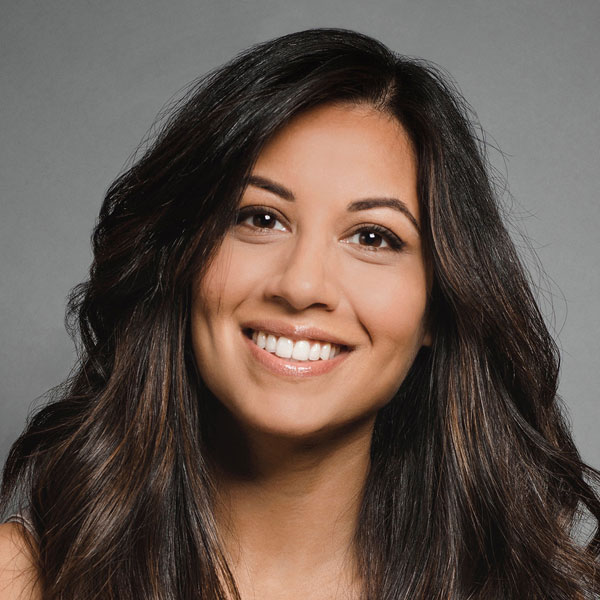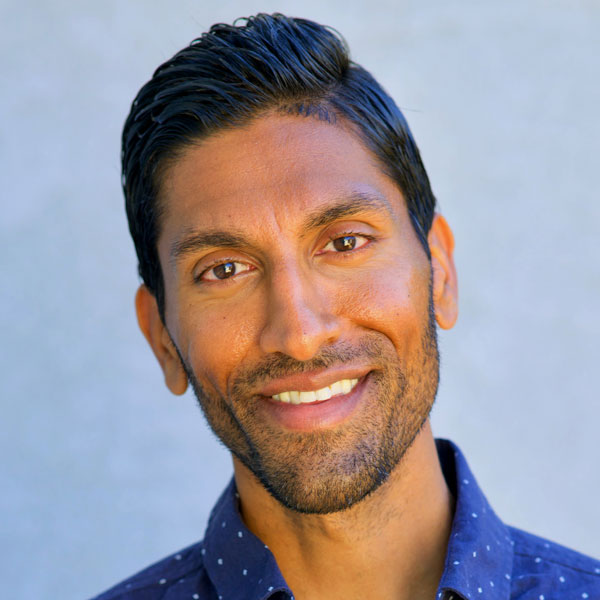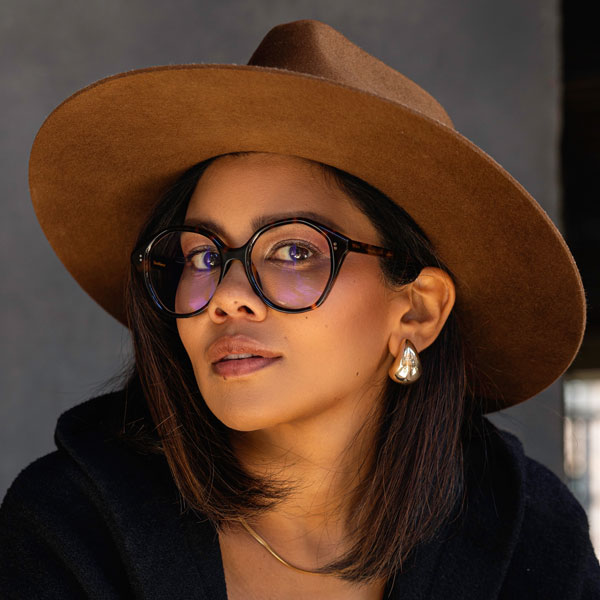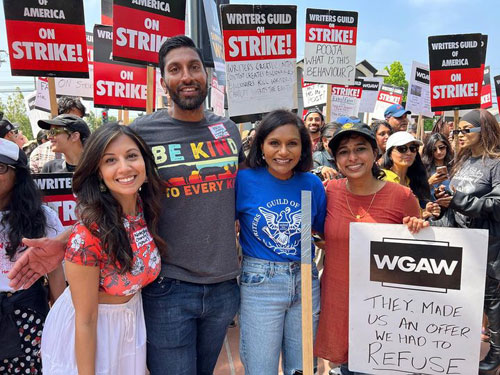After years of community building and momentum, members make it official.
6/10/2025 • Evan Henerson
Production Assistants Fight for a Union
In a national organizing effort, PAs seek better wages, health benefits, and respect.
After years of community building and momentum, members make it official.
For those who missed out on the first meeting of the South Asian Writers Committee (SAWC) on Nov. 6 at the WGAW, Committee Co-chair Natasha Chandel sums up the proceedings succinctly: “We had lots of food, and we kept it vibrant.”
 South Asian Writers Committee Co-chair Natasha Chandel.
South Asian Writers Committee Co-chair Natasha Chandel.That assessment largely sums up the atmosphere whenever this group of writers gets together, which happened often in the two years leading up to SAWC's official formation as the Guild’s newest Inclusion & Equity Committee.
Co-chair Nikhil S. Jayaram recalls coming out of a writers’ room in 2021 for a project that did not end up being produced. The series was set in India, and the writers’ room included several writers of South Asian heritage. From the experience, Jayaram realized there was a strong desire for establishing community among his fellow South Asian WGAW members.
“I had largely personally been feeling like South Asians were just not seen,” said Jayaram. “There are so many South Asians in the Guild and in entertainment. We needed our own space to be seen because everyone sees us as like a stand-alone entity anyway. We just wanted that space for ourselves.”
 South Asian Writers Committee Co-chair Nikhil Jayaram.
South Asian Writers Committee Co-chair Nikhil Jayaram.Working with fellow WGAW members Chandel, Mallika Dhaliwal, and Vidhya Iyer, Jayaram began contacting members who started getting together for unofficial events, ranging from pitch panels to community therapies, from Diwali to Holi celebrations—a total of 19 events between May of 2022 and the summer of 2024 both on the West Coast and as far east as New York and London. This included turning out in force for a South Asians in Solidarity picket outside Disney Studios in 2023.
“We were one of the first pickets to have a DJ and a singer,” Chandel said. “We had food, we had a dhol— an Indian drum. A lot of the organizers of the pickets joked to us that, ‘You guys set the bar.’ So they all felt they had to step up. We were just like, ‘You can’t have a Desi event without food and music.’ It’s something we incorporated into our first event when we became [an official committee]. No one ever goes hungry.”
Of course, it’s not all about food and festivity. Even before they became official, the South Asian writers created staffing grids for TV and feature writers, sponsored a mentorship program and compiled lists of South Asian talent, executives, and directors. They opened up lines of communication between executives seeking South Asian writers for open writing assignments with qualified members.

I didn’t think I could feel this seen and understood in our industry. I always thought there would be sort of an ‘other-ness’ and an ‘outsider-ness’ to me.
- Chitra Sampath
“We’re union members so we sort of self-organized, and just sort of met our own needs,” said Chitra Sampath.
 South Asian Writers Committee member Chitra Sampath.
South Asian Writers Committee member Chitra Sampath.By the summer of 2024, the writers felt they had enough interest and momentum for the Guild to establish the SAWC. Chandel and Jayaram are the committee’s co-chairs with Iyer as Vice Chair. Sampath, a Co-EP and 14-year WGAW member, led the formation drive, writing the group’s proposal which was signed by 205 members.
The SAWC membership includes members with roots in India, Pakistan, Bangladesh, Bhutan, Sri Lanka, Maldives, and Afghanistan. The South Asian diaspora also includes large populations in the United Kingdom, Canada, Australia, the Caribbean, Africa, and the Middle East.
During a Zoom interview with Written by shortly after SAWC’s first meeting, Jayaram, Chandel, and Sampath discussed their experiences as South Asians working in Hollywood. Jayaram (whose credits include Star Trek: Prodigy and The Mysteries of Laura) earned several fellowships, working his way up through multiple assistant jobs before joining the Guild in 2015. Sampath was employed through diversity programs during the early parts of her career.
 The South Asians in Solidarity picket with Mindy Kaling at Disney Studios on May 19, 2023.
The South Asians in Solidarity picket with Mindy Kaling at Disney Studios on May 19, 2023.“You hear about these diversity fellowships. I was a diversity writer at that point, and I was up against all the diversity writers of all races,” said Sampath whose credits include Sleepy Hollow and Southland. “My community of writers was a multi-racial community of people of color, and over the last 14 years, there has been so much growth that now we can have a community of just South Asians. I didn’t think I could feel this seen and understood in our industry. I always thought there would be sort of an ‘other-ness’ and an ‘outsider-ness’ to me.”
An actor and stand-up performer as well a writer and producer, Chandel was a staff writer in the largely Latine writers’ room of Netflix’s Mr. Iglesias. Being part of a diverse room was an experience that she realized many South Asian writers might not have experienced.
“I’m from Canada where the South Asian community is so assimilated in everyday culture,” said Chandel. “So when I came here it was a little jarring for me to go like, ‘Oh, we’re going back to the days of when nobody knew who we were.’ I was used to more progress. I chose to personally face this head on through forming the committee. Nikhil had this great idea, so it was important not to let it go by the wayside and figure out how to be part of the solution.”